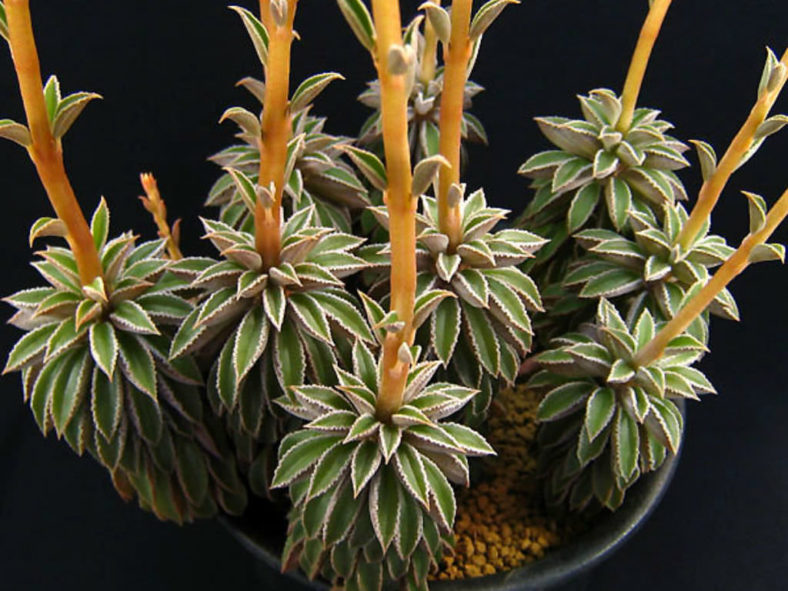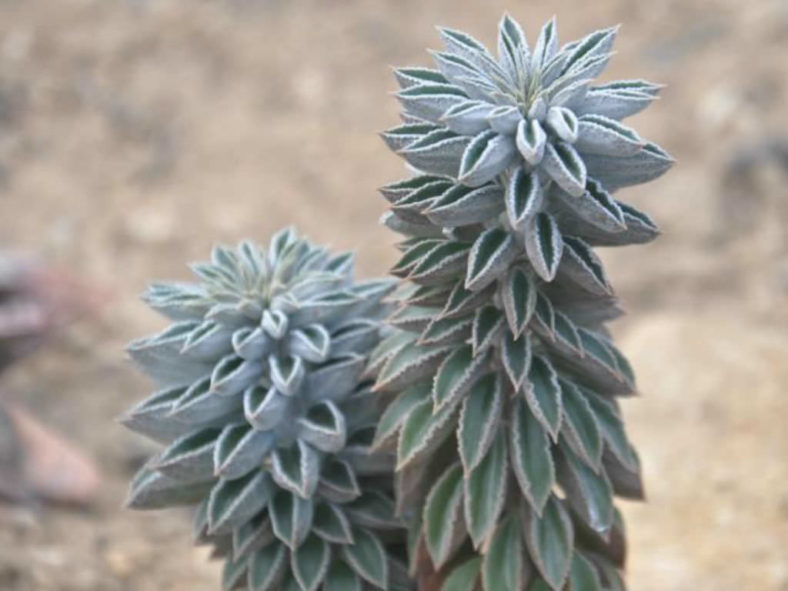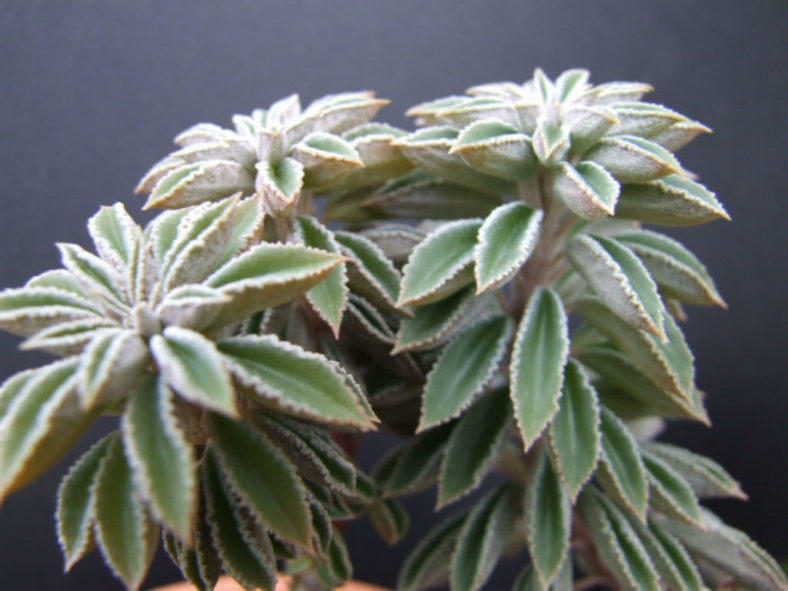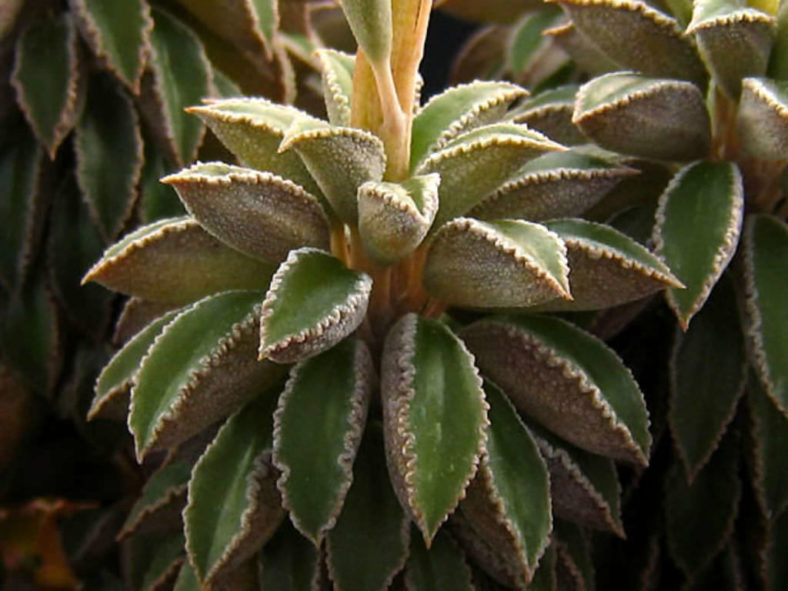Scientific Name
Peperomia wolfgang-krahnii Rauh
Scientific Classification
Family: Piperaceae
Genus: Peperomia
Origin
Peperomia wolfgang-krahnii is native to Peru. It is known only from the type locality, 22 km below Aricapampa on the road to Marañon.
Description
Peperomia wolfgang-krahnii is a stunning small succulent subshrub with windowed, boat-shaped leaves closely packed on short stems. It grows up to 4.8 inches (12 cm) tall, branching profusely at the base. The leaves are highly succulent, tightly undulate-margined, with a warty, silvery-frosted underside and translucent upper surface.
Inflorescences are slender terminal panicles with insignificant flowers. They appear in summer.

Hardiness
USDA hardiness zones 10a to 11b: from 30 °F (−1.1 °C) to 50 °F (+10 °C).
How to Grow and Care
Peperomias are not particularly hard plants to grow, and their small size and delicate leaves make them perfect for desktops and dish gardens. They will rarely overtake their neighbors or shade them out. In short, they are perfectly mannered and attractive small plants. The biggest problems are usually related to watering. They like steadily moist soil but can be very sensitive to overwatering. Overwatered Peperomias tend to wilt or have raised, scab-like protrusions on their leaves. Don't be alarmed if your plant loses a few bottom leaves, but a massive leaf drop is usually due to a temperature change or fertilizer problem. Lastly, Peperomias are susceptible to mealybugs, so watch for cottony white masses on the stems or undersides of leaves. These plants thrive when slightly pot-bound, so don't over-pot them.
Repot plants in spring, especially to refresh the existing soil, but place either back into the same size container after root-pruning or go up only one pot size. The largest Peperomias remain relatively small and will never grow into large specimen plants. Most species can be relatively easily propagated from leaf cuttings.
See more at How to Grow and Care for Peperomia.
Links
- Back to genus Peperomia
- Succupedia: Browse succulents by Scientific Name, Common Name, Genus, Family, USDA Hardiness Zone, Origin, or cacti by Genus
Photo Gallery
Click on a photo to see a larger version.


